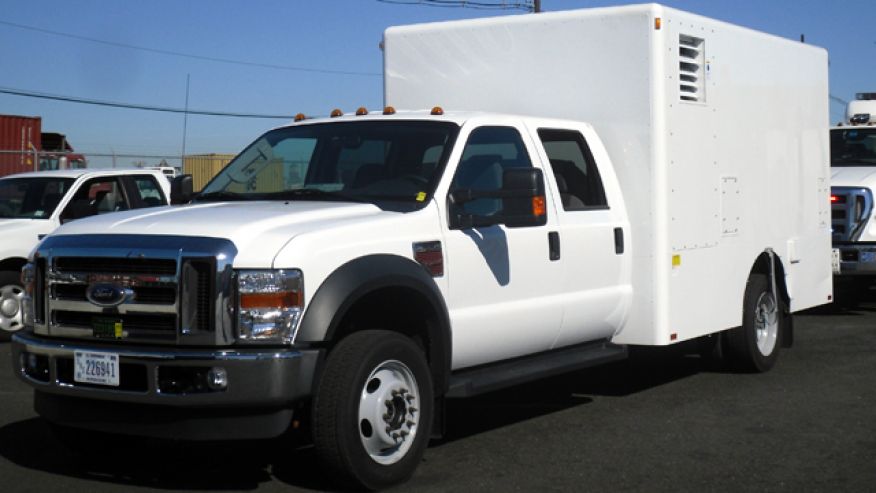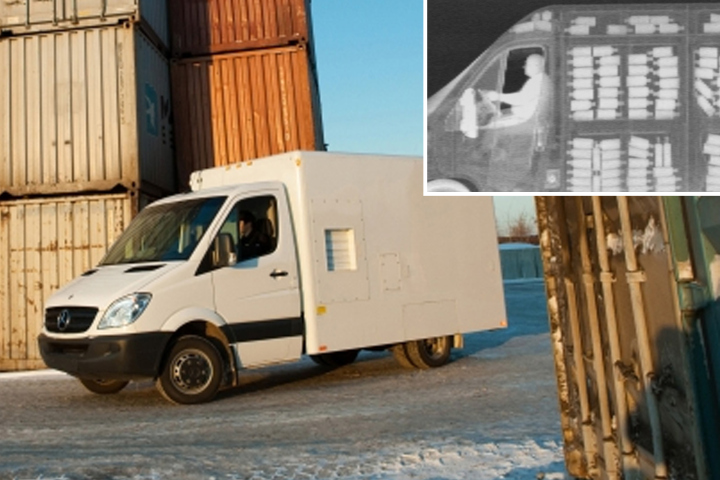NYPD uses mobile X-ray scanners without the knowledge and consent of citizens

ZBV-scanner
According to the material of the New York Post , the New York police adopted an unknown number of vehicles equipped with mobile backscatter X-ray scanners . Such scanners can “peek” inside cars, houses, and under the clothes of passers-by. The fact that the police used such scanners surfaced in connection with a lawsuit filed by a human rights organization.
A wheeled scanner called the Z Backscatter Van (ZBV), which looks like a regular van, only needs 15 seconds to illuminate any vehicle. Scanning equipment can even be controlled remotely, from a distance of up to 500 meters. The cost of such a mobile scanner is about $ 800 thousand .

Another van option
Unlike classic X-ray scanners, a backscatter-based X-ray scanner does not require an object inside the device. The rays reflected from the object under investigation are captured and converted into an image. At the same time, such a scanner can show organic tissues and other non-metallic materials, such as explosives, plastic weapons, etc.
Such scanners are gradually appearing at airports. It is alleged that the dose of radiation received in them is extremely small. According to one study , radiation exposure obtained from scanning at the airport will not amount to 1% of the additional radiation dose received during a flight in the upper atmosphere.
The existence of such ZBV scanners in various state presses became known back in 2010 , and by that time they had already been used for several years by the state security, military and some police units. One senior customs official, Patrick Simmons, claimed that more than a thousand seizures were carried out from mobile scanners from 2008 to 2010, resulting in the discovery and seizure of nearly 45 tons of drugs, $ 4 million worth of currency and a dozen illegal migrants .

Example image from a scanner
In addition, civil servants claim that the images of people received by ZBV are only silhouettes - you can find a hidden illegal migrant from them, but you can not identify a person, his race and age.
But human rights activists oppose such scanners. In fact, a person without clothes is visible on the resulting image, so there is ongoing debate over the admissibility of viewing the received images by security officials. Some critics claim that such a technique can be compared to a search without a warrant.
And the mobile scanner, which looks not only under the clothes of passers-by, but also in cars, and even in light buildings (plywood-plasterboard houses popular in America), has caused a wave of criticism. “A van that is driving along the street and looks under people’s clothes and in their houses?” In my opinion, this is a violation of privacy and we should not do such things, ”said Congressman Jason Chaffetz.

Example image from a scanner
The problem is that only by 2010 the manufacturer of ZBV, American Science and Engineering (AS&E), had already sold about 500 of these machines - and no one but the manufacturer had an exact list of customers. Judging by the company's press releases, it sells such cars to other countries. They were bought by the Thai police, customs of New Zealand and Bulgaria, and other foreign services.
And now it turns out that NYPD is using ZBV on an ongoing basis. At the same time, the highest police officials refused to name the number of cars available to the guards, and the frequency of their use, as well as provide answers to other questions posed. Police Commissioner Bill Bratton noted only: “The use of these devices is subject to security and anti-terrorism activities. They are not used to search for weapons in humans. ”
Journalist Michael Grabell on behalf of human rights organization Pro Publica has been pushing for three yearsfrom the city administration in court answers to questions about the use of ZBV. In connection with a possible intrusion into the personal lives of citizens and harm to health, the organization believes that the public should know all the details of the use of such equipment and generally decide how the police should ensure their safety.
The outrage of human rights defenders is caused both by the fact of using such equipment, and by the fact that law enforcement agencies are trying to keep this a secret as much as possible. Human rights activists believe that the use of equipment that could violate privacy and harm health should be tightly regulated.
